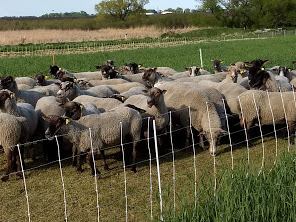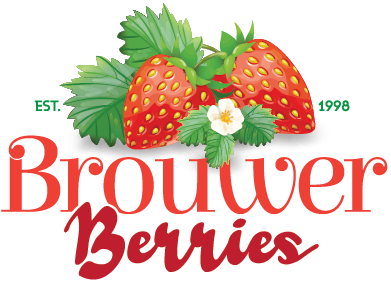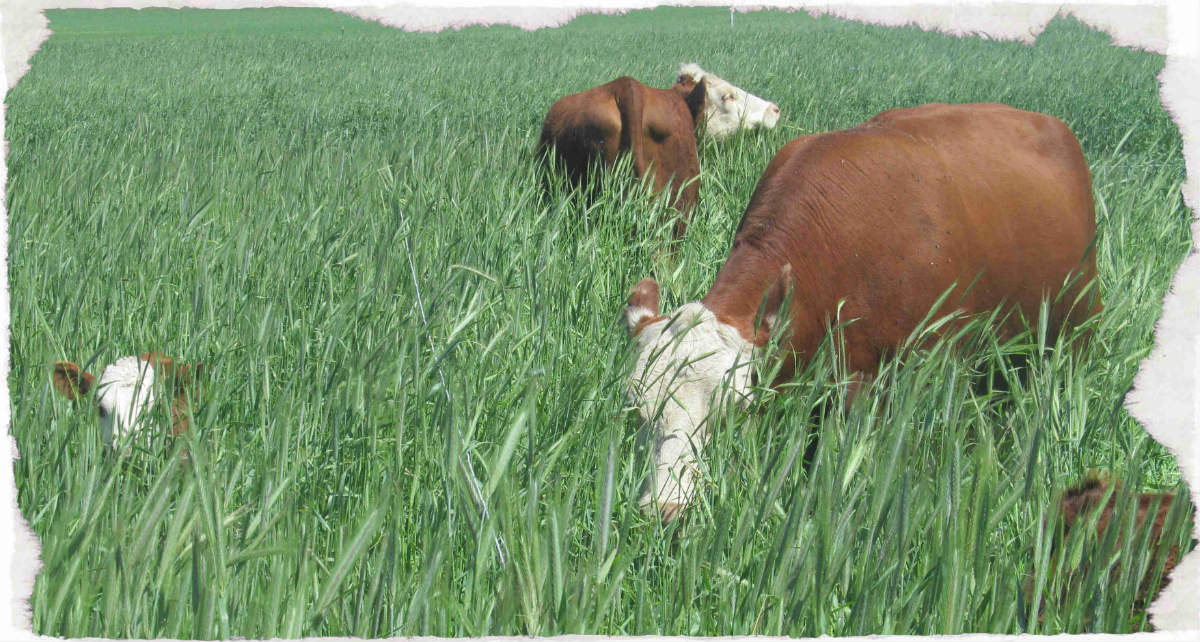My husband Dan loves cows. Has loved them since he was a boy visiting his grandpa’s dairy farm in Northwest Iowa. He went to college to be a dairy farmer, but soon realized we couldn’t afford to start our own dairy. So, he started a strawberry farm.
About 2013, he figured out that he could get cows and incorporate them into our strawberry rotation. And then eat them. Yum! Unfortunately, aside from a freezer full of great steaks, the cows didn’t help the land.
So, in the fall of 2018 we sold the cows and bought a flock of sheep. You can read the full proposal below… but the summary is that we’ve used grant money to purchase a better fencing system, powered by solar, and with the ability to keep coyotes away.
We are now grazing the sheep on our cover crops, hoping that they improve our soil while saving us feed costs. It’s been two weeks, and so far, we’ve saved $800. Not bad! The fence is quite portable, so Dan is able to move the sheep from section to section fairly easily.


Project Rationale*
What is the purpose of the project?
Why is it important?
How will this project benefit other farm businesses?
We would like to test a new way to utilize fallow ground between strawberry rotations. Strawberry fields must be rotated on a regular basis to reduce weed pressure and to minimize the replant diseases called black root rot. Strawberry growers often debate on how to use the land between strawberry rotations. We have our strawberries in the ground a little more than three years. The first year is the establishment year, and the second and third years are used for production. At the end of the third picking season (early July), the strawberry plants are plowed under and are planted into a series of cover crops for the end of summer and for the following growing season. We would like to show that grazing sheep on the cover crops will be a profitable use of the strawberry ground in the fallow years.
We, like all MN farmers, have faced increasingly negative weather events over the past two decades, including drought, extreme rain events, deep winter kill, and powerful winds. Each weather event cost us thousands of dollars in lost revenue as our strawberry plants died. About five years ago, we enrolled in classes with Thaddeus McCamant at Central Lakes College to learn how to grow stronger plants that could withstand extreme weather and remain productive. These classes led us to believe that healthy soil is the key to healthy plants, and that healthy plants can withstand adverse weather conditions. We have to be careful with our soil, because we have a silt loam soil with a fairly high pH. In some areas of our strawberry field, the plants occasionally become chlorotic due to the high pH.
Chlorosis is a major problem for strawberry growers in western Minnesota, where the soils are heavier and often have a pH above 7.0. We know that chlorosis is due to a high pH, but other factors like soil compaction, soil health organic matter can either aggravate or minimize chlorosis.
We began rotating our strawberry plants with covercrops, and grazing these covercrops with cattle. Soil tests confirmed that nutrient levels and organic content were increasing. Harvest data showed that their poundage per acre tripled. Public interest in our farm soared, leading to speaking engagements, school tours, and a spot on WCCO for “Best Strawberry Farm in MN”.
However, the cattle have had some problems. Their heavy bodies caused compaction in the areas around the water troughs, leading to poor strawberry plant establishment. While compaction is a problem in all soils, it is worse for us, because iron chlorosis is often correlated with soil compaction. The cattle grazed selectively, leading to heavy weed pressure in new strawberry beds. Also, cattle prices dropped.
No farm wants to use such a flawed system. There is no good insurance plan for specialty crops, so we are at tremendous risk levels as we grow larger. This fall, we sold the cattle and purchased a flock of sheep. We intend to graze the sheep on our cover cropped land, hoping we increase our poundage per acre no matter what adverse weather conditions come our way. We intend to carefully steward this flock, in order that the sheep will be profitable as a separate enterprise, to balance out any losses we incur on our strawberries.
There are many farmers in Minnesota like ourselves, with only a small parcel of land, all facing unpredictable weather. All of those farmers are looking for ways to increase production per acre while minimizing risk. If the sheep improve soil, thus profits, while at the same time being profitable as a side business, they will ‘flock’ to us to learn our techniques.
We believe there is a huge need for farmers who are willing to be transparent about farming. Our desire is to use social media every step of the way to educate other farmers and the general public about our successes and failures. We want to invite school groups and the general public to our farm during the lambing season to celebrate new life and be educated about the important connection between animals, crops, and the people of Minnesota.
Farming has such a rich heritage in Minnesota, but our people are forgetting. As farms grow larger, fewer children have access to farms, and people are not connecting emotionally with supersized dairy farms and turkey enterprises. Our people need to be reminded of the families that are supported by the land, and the land needs to be maintained in such a way that it can support its’ farm family. A project such as we are proposing will benefit our farm, and if our methods are copied, it could benefit other farmers, while providing a space for the people of Minnesota to emotionally connect with a farm family.

